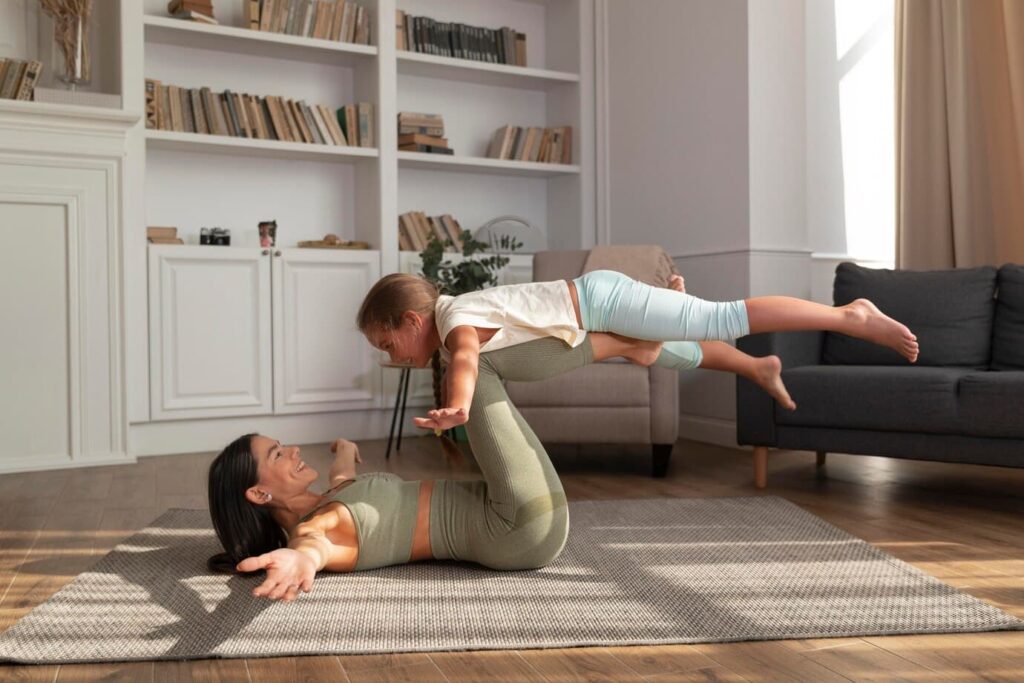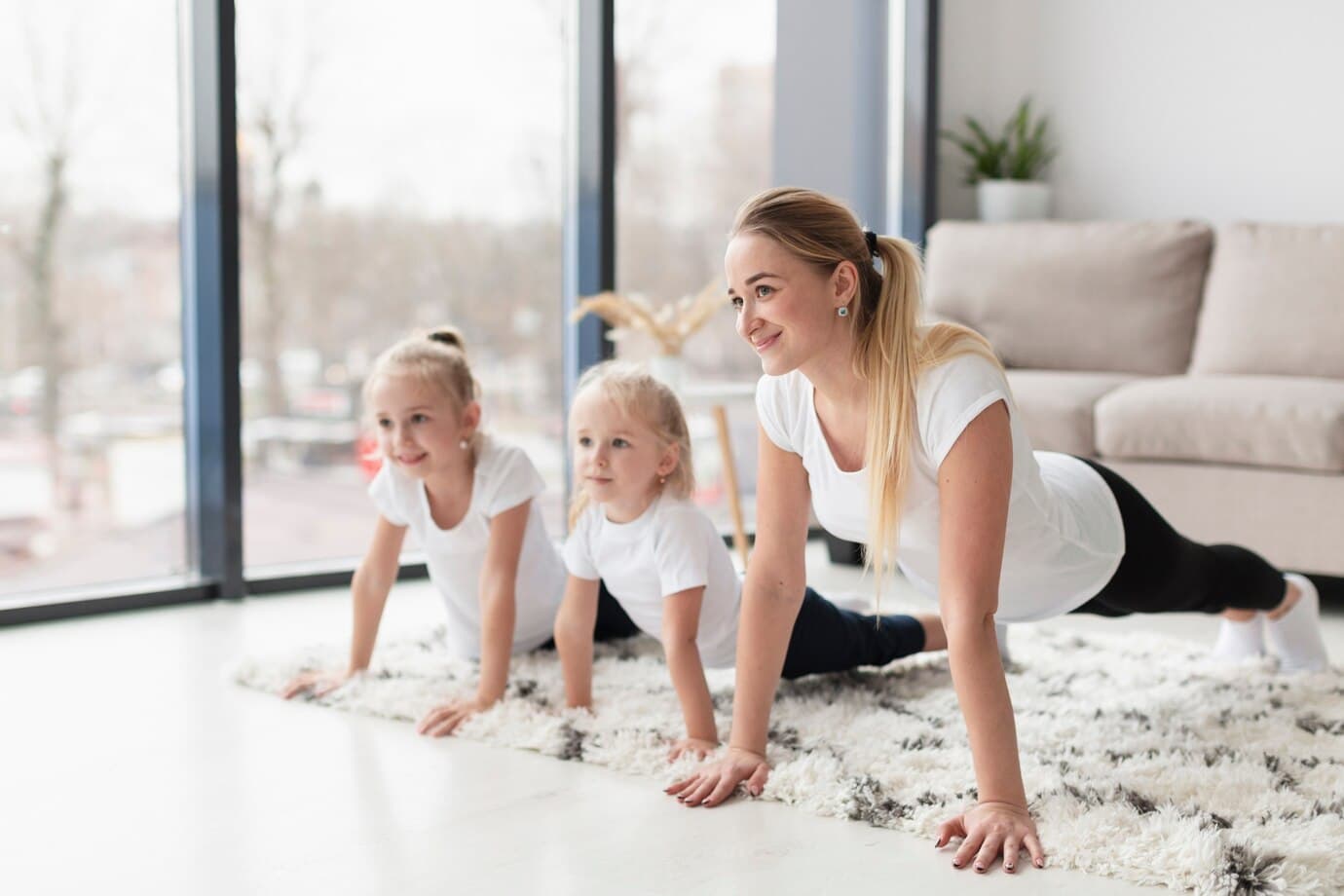In the modern household, stress is often a shared commodity. The pressures of work, school, and a hyper-connected world don’t just affect parents; they trickle down, creating an undercurrent of tension that can impact the entire family unit. While conventional advice often points to solitary solutions like meditation or a quiet bath, these are frequently luxuries that parents of young children simply cannot afford. The real, actionable solution might be more dynamic, more engaging, and something you can do together: movement.
This isn’t about structured, rigid exercise routines. It’s about leveraging the science of co-regulation and the power of play to create a biological and emotional buffer against stress. When a family moves together, they are doing more than just burning calories; they are communicating, connecting, and regulating their nervous systems in unison. This article moves beyond generic lists of jumping jacks to explore the ‘why’ behind movement as a stress-relief tool and offers creative, easy-to-implement workouts that feel more like play than a chore.
The Neurological Dance of Co-Regulation
Before diving into specific activities, it’s crucial to understand why shared movement is so potent. The magic lies in a concept called “co-regulation.” This is the process by which we manage our emotional and physiological states through connection with another person. For a child, co-regulation with a parent is fundamental to developing their own capacity for self-regulation later in life.
When you engage in synchronized, playful movement with your child, several powerful things happen in the brain:
- Mirror Neuron Activation: Humans are wired with mirror neurons, which fire both when we perform an action and when we observe someone else performing that same action. When your child sees you moving in a calm, playful, and rhythmic way, their brain begins to mirror that state, helping to soothe their own agitated nervous system. You are, quite literally, lending them your calm.
- A Cocktail of “Happy” Neurochemicals: Playful physical activity releases a cascade of beneficial neurochemicals. Endorphins act as natural mood elevators. Dopamine reinforces the activity as rewarding and fun, making you want to do it again. Crucially, shared positive experiences also release oxytocin, the “bonding hormone,” which strengthens feelings of trust and connection, directly counteracting the isolating effects of stress.
- Discharging Stress Energy: Stress and anxiety create a real, physical energy in the body—the classic “fight or flight” response. This energy needs to go somewhere. Rhythmic, whole-body movements provide a healthy, safe, and constructive outlet for this pent-up energy for both parents and kids, preventing it from emerging as meltdowns or arguments.
The At-Home Movement Menu: More Than Just Exercise

The key to success is to frame these activities as games, not workouts. The goal is connection and release, not performance. Here are a few ideas to get you started, built around narrative and imagination.
The Animal Kingdom Safari: This is a classic for a reason. Instead of just listing animal walks, create a narrative. You’re on a living room safari, crawling like a tiger under the coffee table, hopping like a frog across cushion “stones,” and stretching tall like a giraffe. This transforms simple movements like crawling, hopping, and stretching into an engaging adventure.
The Rhythm Factory: Put on upbeat music and become a rhythm factory. You and your kids are machines. One person starts a beat by stomping, another adds clapping, and a third adds vocal sounds like “shhh.” This activity develops rhythm and synchrony. Moving in sync is a powerful way to build unity and cooperation, combating the disconnection caused by stress.
This personal time is about proactive self-care, not leaving well-being to chance. While some adults unwind with hobbies, others explore online entertainment for a brief mental escape. The digital landscape offers various platforms, and a site like http://casinosdeargentina.com/juegos/slots-que-mas-pagan illustrates one facet of online adult entertainment. However, the most effective strategy for parental stress isn’t fleeting distraction but cultivating mindful presence through meditation, a quiet hobby, or five minutes of conscious breathing before re-engaging with family life.
Superhero Training Academy: Every child loves a superhero. Turn your living room into a training academy for “lifting boulders” (sofa cushions), “dodging laser beams” (yarn strings), and “flying” to save the day. These are fantastic, full-body exercises disguised as epic play. This empowers children, giving them a sense of strength and capability that acts as a powerful antidote to the helplessness of anxiety.
To make these sessions most effective, keep these principles in mind:
- Focus on Play, Not Performance: There’s no wrong way to play. Laugh at mistakes and embrace silliness.
- Embrace Imperfection: A joyful 15 minutes is great, but so is a two-minute attempt to connect before a meltdown. Both are okay.
- Let Kids Lead: Asking what they want to play increases their engagement and enjoyment.
- Keep it Short and Sweet: 5-10 minutes of focused play is more effective than a forced 30-minute workout.
Building a Movement Habit That Lasts
The ultimate goal is to integrate this type of playful movement into the fabric of your family life. Don’t treat it as another item on your to-do list. Instead, use it as a tool. Is everyone getting cranky before dinner? Announce a five-minute “Animal Safari.” Did your child have a tough day at school? Initiate a “Superhero Training” session to help them reclaim their power.
By reframing exercise as a shared ritual of play and connection, you do more than just manage stress in the moment. You build a foundation of resilience, teach your children healthy coping mechanisms, and create a family culture where moving together is a source of joy and stability. You’re not just working out; you’re building a calmer, more connected home, one bear crawl at a time.
